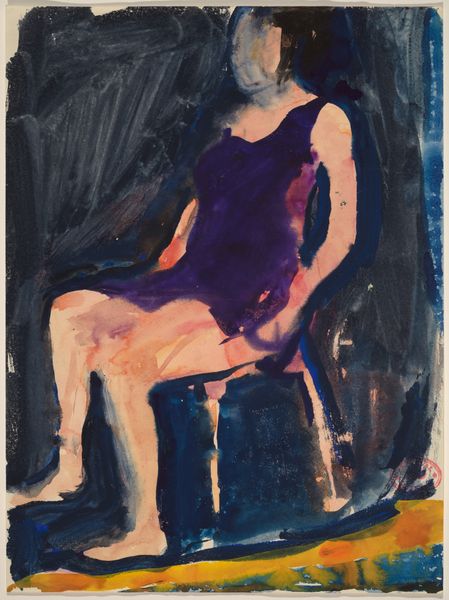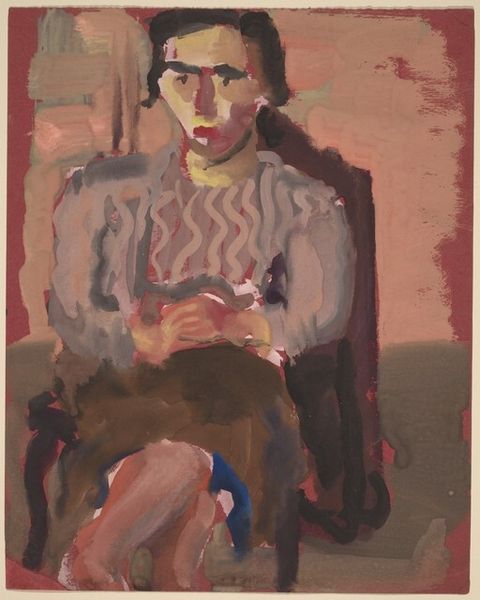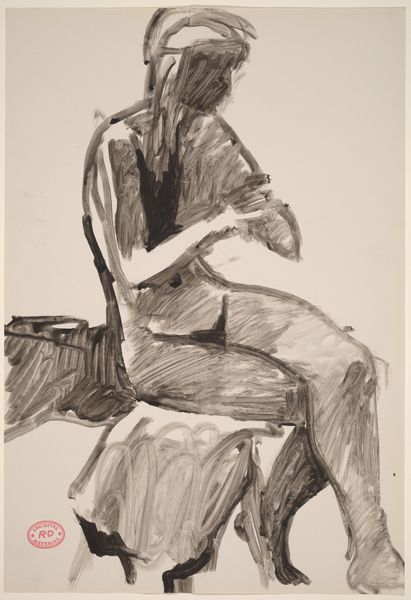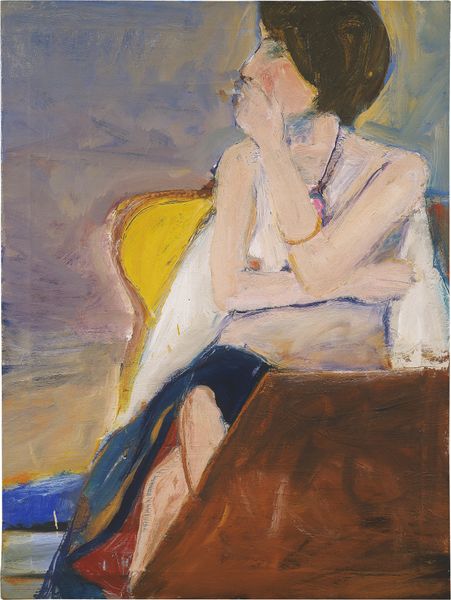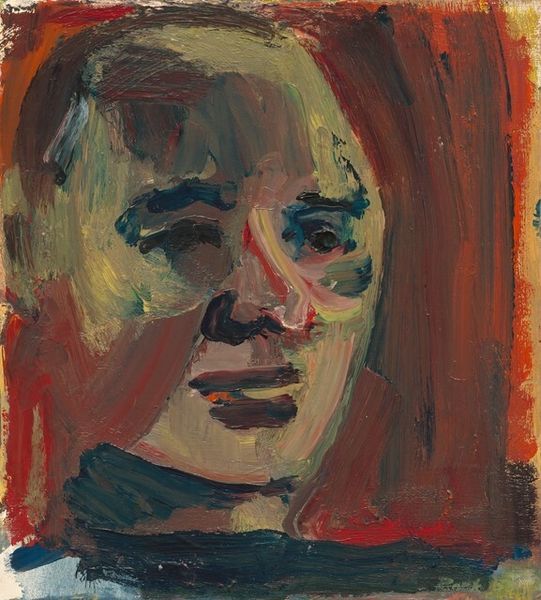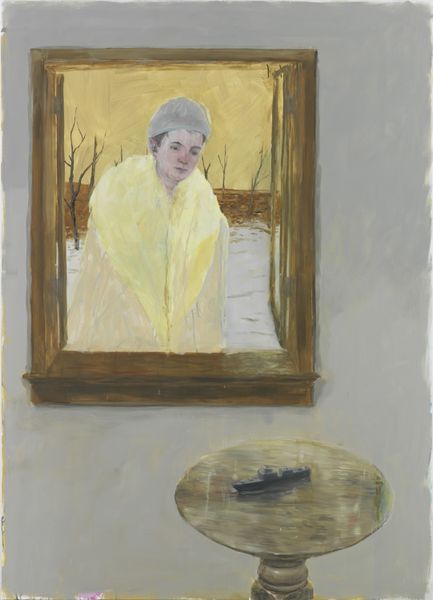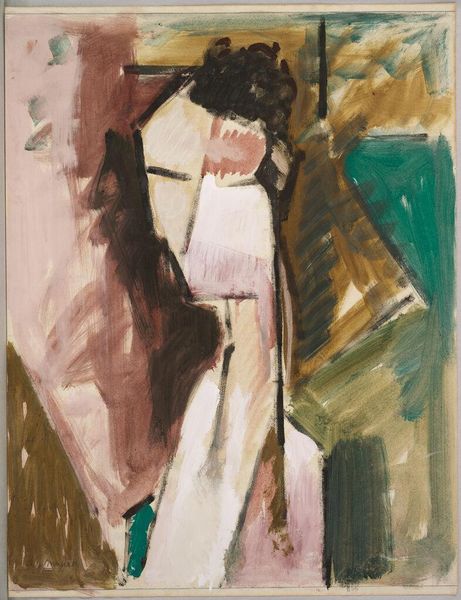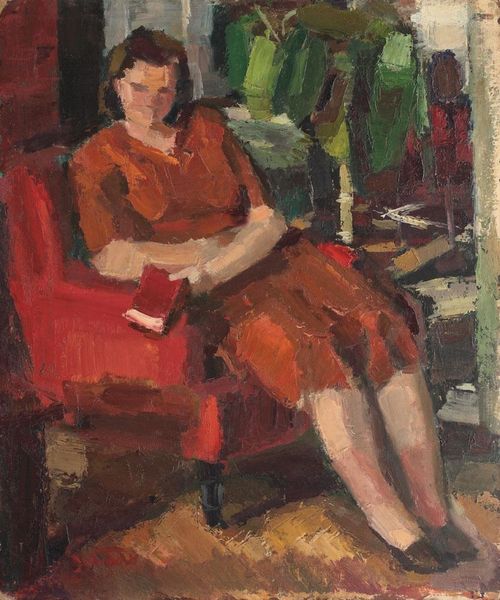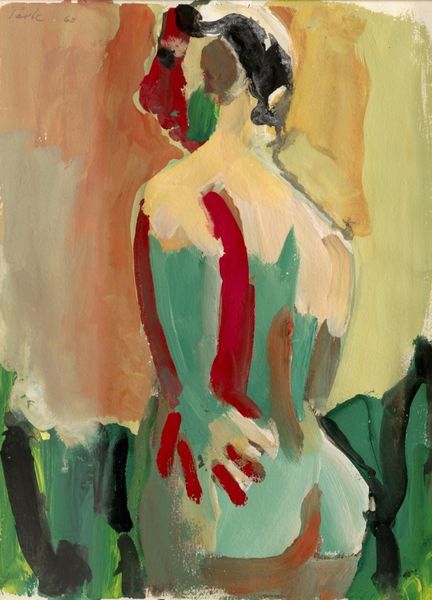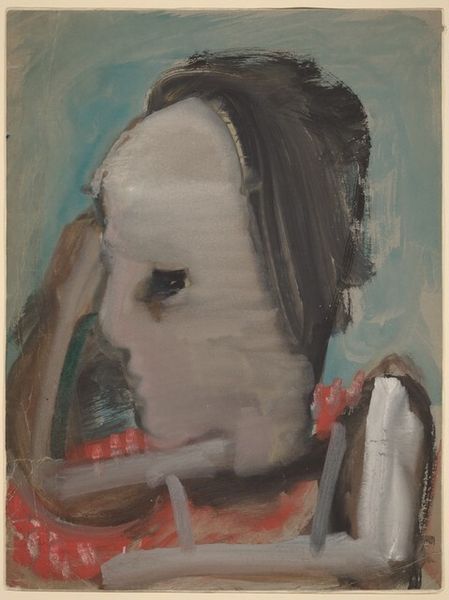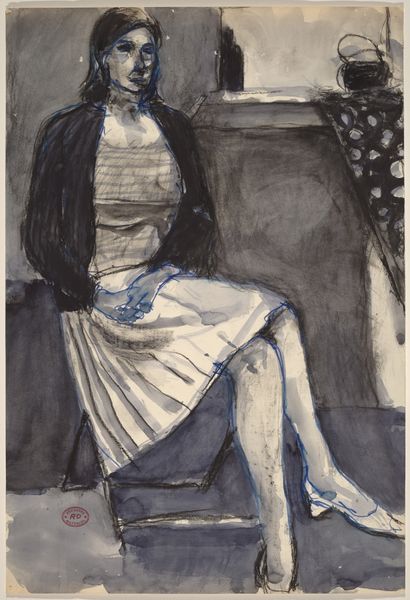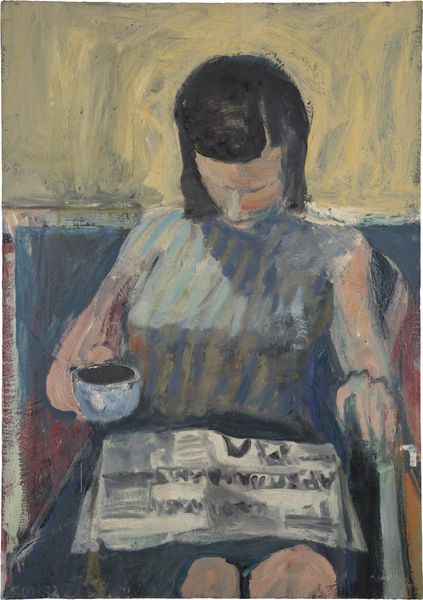
drawing, painting, watercolor
#
portrait
#
drawing
#
painting
#
figuration
#
oil painting
#
watercolor
#
modernism
Dimensions: sheet: 30.48 × 20.32 cm (12 × 8 in.)
Copyright: National Gallery of Art: CC0 1.0
Curator: Welcome. Today we're exploring an early work by Mark Rothko, "Untitled (woman in armchair)", likely painted between 1934 and 1935. It offers a glimpse into his move toward abstraction. Editor: The instant I look at this, I feel a haunting stillness, a sort of Edward Gorey moodiness mixed with the raw immediacy of, like, an uncovered sketch. Is that unsettling? It feels unresolved. Curator: Not at all. You've immediately sensed something vital. It's less about a specific woman and more about exploring form, shadow, and the spatial relationships created by the figure and her surroundings. Notice the stark juxtaposition of color. Editor: Yeah, that eerie pale skin against the murky backdrop… and those kind of claw-like hands floating on her lap. Everything’s a bit off-kilter. But it feels raw, deeply honest, you know? It's not trying to be pretty. Curator: Precisely. Rothko uses watercolor and perhaps oil to break from representational tradition. He distorts the traditional portrait. Her facial features are abstracted into shadow. The setting almost disappears. Editor: I dig that. There’s this push-and-pull between what's being depicted and what the painting IS, itself, like the tension you see when you put paint to paper. You can see every stroke and blur of the brush. It feels alive in that tension. Curator: You can start to see Rothko’s broader development in this piece. He's engaging with Modernist principles, such as simplifying form and emphasizing color, prefiguring his famous color field paintings. Editor: Maybe it's that raw process I'm connecting with, because ultimately it’s the humanness of it that I'm drawn to – not in what is shown, but the act of the painter, capturing that instant of emotion and that briefness of what he is painting in real-time. And of course, just simply the use of dark tones is powerful, I just really feel his emotions captured here on canvas. Curator: A powerful thought to carry. It shows us how Rothko, early in his journey, was stripping down figuration to expose the emotional core of both the subject and the act of painting. Editor: Yeah. It is hauntingly beautiful, even unfinished.
Comments
No comments
Be the first to comment and join the conversation on the ultimate creative platform.
